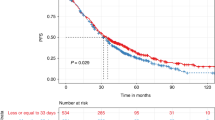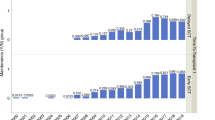Abstract
The interval between courses of chemotherapy have classically been kept to a minimum in order to maximize dose intensity. Certain clinical observations suggest that longer intervals, particularly in the high-dose setting, may be more effective. This is based in part on the evidence that resistance is reversible over time and that the interval should be sufficient to allow for such a reversal. Clinical evidence for such reversibility include the following. In metastatic breast cancer, double or double high-dose stem cell rescue (HD-SCR) studies involving a minimal interval, have not, at least as yet, been shown to be superior to single HD-SCR. In Hodgkin’s disease, response after relapse correlates directly with duration of time to relapse. In a comparative study of metastatic breast cancer, early HD-SCR preceded by daunorubicin induction was inferior to delayed HD-SCR. The latter was not preceded by induction chemotherapy. In a comparative study of childhood ALL, patients randomized to delayed (4 month interval) intensification had a significantly superior survival as compared to patients randomized to immediate (1 month interval) intensification. Taken together, these clinical observations indicate that resistance is reversible and that optimization of the interval must take this into account. Cytokinetic modeling of those clinical studies also found that delayed HD-SCR could result in a superior effect. Cytokinetic models of minimal residual tumor which were also examined included the Skipper exponential model, the Norton–Simon model which emphasizes the Gompertzian effect, the clonal evolution model, and the Retsky–Demisheli model which derives from a bimodal relapse pattern above. Biological and clinical data have resulted in a clinical protocol in the CALGB wherein patients with metastatic breast cancer are randomly allocated to (1) a single HD-SCR arm; (2) a double HD-SCR with a 5-week interval; and (3) a double HD-SCR arm with a 16 week interval.
This is a preview of subscription content, access via your institution
Access options
Subscribe to this journal
Receive 12 print issues and online access
$259.00 per year
only $21.58 per issue
Buy this article
- Purchase on Springer Link
- Instant access to full article PDF
Prices may be subject to local taxes which are calculated during checkout
Similar content being viewed by others
Author information
Authors and Affiliations
Rights and permissions
About this article
Cite this article
Frei III, E., Richardson, P., Avigan, D. et al. The interval between courses of high-dose chemotherapy with stem cell rescue: therapeutic hypotheses. Bone Marrow Transplant 24, 939–945 (1999). https://doi.org/10.1038/sj.bmt.1702012
Received:
Accepted:
Published:
Issue Date:
DOI: https://doi.org/10.1038/sj.bmt.1702012
Keywords
This article is cited by
-
Recent translational research: computational studies of breast cancer
Breast Cancer Research (2004)
-
A short course of induction chemotherapy followed by two cycles of high-dose chemotherapy with stem cell rescue for chemotherapy naive metastatic breast cancer: sequential phase I/II studies
Bone Marrow Transplantation (2001)



